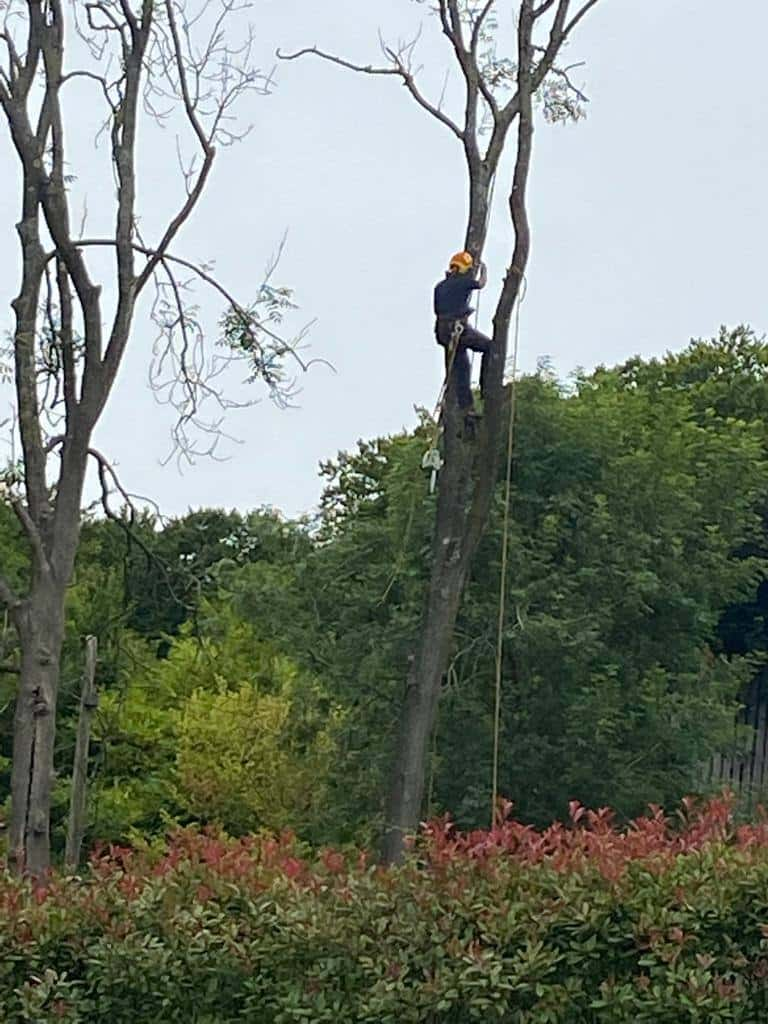Introduction: At Wickham Market Tree Surgeons, we believe that maintaining the health and appearance of your garden is essential for creating a welcoming and aesthetically pleasing environment. One key aspect of garden maintenance is the proper pruning of overgrown hedges. Pruning helps keep your hedges looking neat and tidy and promotes healthy growth and longevity. This blog post will share the best practices for pruning overgrown hedges to ensure they thrive and enhance your garden’s beauty.
1. Understanding the Right Time to Prune
Timing is crucial when pruning hedges. Different hedge species have varying growth cycles, and pruning at the wrong time can hinder their development. Generally, the best time to prune most hedges is late winter or early spring before new growth begins. This timing allows the hedge to recover quickly and promotes vigorous growth in the growing season.
- Deciduous Hedges: Prune in late winter while the plants are still dormant.
- Evergreen Hedges: Prune in early spring to encourage new growth and maintain shape.
2. Gathering the Right Tools
Having the appropriate tools for the job ensures a clean and efficient pruning process. Invest in high-quality, sharp, and well-maintained tools to make precise cuts and reduce the risk of damage to the plants.
- Hedge Shears: These are used to trim smaller branches and shape the hedge.
- Loppers: For cutting thicker branches.
- Pruning Saw: This is used to remove very thick branches.
- Secateurs: For detailed trimming and shaping.
3. Assessing the Hedge
Before you start pruning, assess the hedge’s condition and plan your approach. Identify any dead, diseased, or damaged branches that need removal. Also, look for areas where the growth is particularly dense or uneven.
4. Pruning Techniques
Correct pruning techniques are essential for maintaining the hedge’s health and appearance. Here are some key techniques to follow:
- Thinning: Remove selected branches to improve air circulation and light penetration. This helps to prevent disease and encourages healthy growth.
- Heading Back: Cut back the length of branches to encourage bushier growth. This technique is useful for maintaining the desired shape and size of the hedge.
- Topping: Reduce the height of the hedge by cutting back the top branches. This is particularly important for very tall or overgrown hedges.
- Trimming: Use hedge shears or trimmers to create a neat and uniform appearance. Trim evenly to maintain the hedge’s shape.
5. Creating a Tapered Shape
For optimal light exposure and to prevent the base of the hedge from becoming sparse, it’s important to create a tapered shape. The hedge should be wider at the base and gradually taper towards the top. This allows sunlight to reach the lower branches and promotes even growth throughout the hedge.
6. Avoiding Over-Pruning
While it can be tempting to drastically cut back an overgrown hedge, over-pruning can stress the plants and lead to poor recovery. Aim to remove no more than one-third of the hedge’s total volume in a single pruning session. If the hedge is severely overgrown, consider spreading the pruning process over multiple seasons to avoid shock.
7. Post-Pruning Care
After pruning, it’s essential to care for your hedge to encourage healthy regrowth. Water the hedge thoroughly and apply a balanced fertiliser to provide nutrients. Mulching around the base of the hedge can also help retain moisture and suppress weeds.
8. Regular Maintenance
Establish a regular maintenance schedule to prevent your hedge from becoming overgrown again. Regular trimming and pruning will keep the hedge in shape and reduce the need for drastic pruning in the future. Aim to trim the hedge at least twice yearly, depending on the growth rate and species.
Conclusion: Pruning overgrown hedges requires careful planning, the right tools, and proper techniques to ensure the health and appearance of your garden. By following these best practices, you can maintain beautiful, well-kept hedges that enhance your outdoor space.
Call us on: 01728 448 695
Click here to find out more about Wickham Market Tree Surgeons
Click here to complete our contact form and see how we can help you with your tree’s needs.

